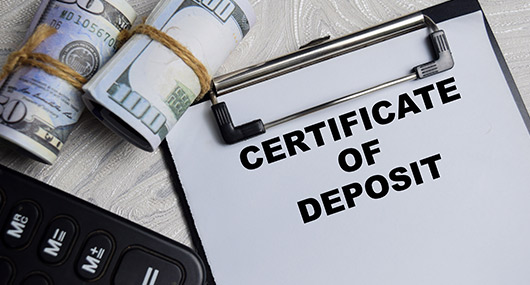Choosing the right savings account can have a real impact on your financial stability and future security. Nearly half of Americans, around 45%, would struggle to cover a $1,000 emergency without relying on credit. That makes picking the right place to keep your money more important than ever.
A good savings account does more than just hold your money. It allows your funds to grow while still giving you access when you need it. Bank of South Texas offers a variety of options; each suited to different needs. You can opt for various accounts, such as a simple, easy-access account; a high-yield account designed for faster growth; a money market account that lets you write checks; or a certificate of deposit (CD) with a fixed rate and term. With inflation gradually eroding purchasing power, choosing an account that helps your money grow faster than the rising cost of living is necessary.
The best approach is to match an account to your personal goals, timeline, and comfort with risk. Whether you’re building an emergency fund, saving for a big purchase, or planning for retirement, knowing the strengths and limitations of each type of account will help you make choices that support your financial goals.
Savings Insights at a Glance

These key points can help you make smarter choices to grow and protect your savings:
- The right savings account can help you earn significantly more interest, potentially hundreds of dollars annually on larger balances.
- Different accounts offer varying levels of liquidity, balancing accessibility with growth potential.
- Strategic selection of savings vehicles can protect your funds from inflation erosion.
- Choosing accounts that align with your specific goals increases the likelihood of achieving your financial objectives.
Clarifying Your Options
Different types of savings accounts offer features tailored to various financial goals and preferences. Here’s a breakdown to help you choose the right account for your needs:
1. Traditional Savings Accounts
Savings accounts are financial tools that let you securely store money while earning interest, with different types offering features suited to various goals and access needs:
- Widely available at banks and credit unions nationwide.
- Offer basic interest rates (typically 0.01%–0.38% APY).
- Low or no minimum balance requirements ($0–$50 at many institutions).
- Easy access to funds, with some transaction limits (usually 6–9 withdrawals per month/quarter).
- Best for: Emergency funds and short-term savings goals that require frequent access.
2. High-Yield Savings Accounts

High-yield savings accounts provide higher interest rates than traditional accounts, making them a strong option for growing your savings:
- Primarily offered by online banks and some credit unions.
- Feature significantly higher interest rates (currently up to 4.66% APY).
- Often have fewer fees than traditional accounts.
- Maintain FDIC insurance protection up to $250,000.
- Best for: Growing savings faster while maintaining liquidity.
3. Money Market Accounts
Money market accounts blend savings and checking features, offering flexibility with the potential for higher returns:
- Combine features of both savings and checking accounts.
- Offer higher interest rates than traditional savings (often tiered based on balance).
- Provide limited check-writing abilities (typically six transactions monthly).
- Usually require higher minimum balances ($2,500+ at many banks).
- Best for: Savers who need occasional access while earning better returns.
4. Certificates of Deposit (CDs)
Certificates of Deposit (CDs) let you lock in a fixed interest rate for a specific period, offering steady growth in exchange for limited access to your funds:
- Fixed interest rates for set terms (from 3 months to 5+ years).
- Currently offering competitive rates around 4% APY for many terms.
- Early withdrawal penalties apply (typically 90–183 days of interest).
- Available in various formats (traditional, no-penalty, bump-up, IRA).
- Best for: Locking in rates and disciplined saving for specific timeframes.
5. Specialized Savings Accounts

Specialized savings accounts cater to specific goals, such as healthcare or children’s education, offering unique benefits and incentives tailored to those purposes:
- Health Savings Accounts (HSAs): Tax-advantaged accounts for medical expenses.
- Kids’ Savings Accounts: Designed for minors with educational features.
- Often include special benefits like parental controls or tax advantages.
- May have specific eligibility requirements.
- Best for: Saving for specific purposes with additional financial advantages.
Selecting the right savings vehicle depends largely on your personal financial goals, timeline, and how frequently you’ll need to access your funds. Each account type offers distinct advantages that can significantly impact your savings success when properly matched to your needs.
Comparing the Pros, Cons, and Best Uses of Each Account Type
Understanding the differences between various savings account options can help you make an informed decision about where to keep your money. Compare account access, growth potential, and flexibility in the table below.
| Account Type | Pros | Cons | Interest Rate Range (Current) | Best Suited For |
| High-Yield Savings Account | Significantly higher interest rates. Often minimal or no feesFDIC insured up to $250,000Good for organizing savings goals | Variable interest ratesLimited to six withdrawals per monthOften online-only | 3.70%–4.66% APY | Mid-term goalsEmergency fundsSaving for specific purchases |
| Money Market Account | Higher rates than traditional savingsLimited check-writing privilegesMay include debit card accessFDIC insured up to $250,000 | Higher minimum balance ($2,500 typical)Fees if balance falls below minimumSix transactions per month limit | 1.0%–3.0% APY | Balancing liquidity and earningsMedium-term goals |
| Premium Money Market Account | Higher interest ratesCheck-writing privilegesFDIC insured- Added features | Higher balance required ($25,000 typical)Larger fees if balance dropsLimited withdrawals | 2.0%–3.5% APY | High balances, medium to long-term savings |
| Certificate of Deposit (CD) | Fixed, guaranteed ratesHigher returns for longer termsFDIC insuredPromotes saving discipline | Locked funds for termEarly withdrawal penaltiesNo additional deposits during term | 4.10%–4.30% APY | Long-term savingsGuaranteed returns |
| Traditional Savings Account | Easy accessLow or no minimum balanceFDIC insuredWidely available | Very low interestPossible maintenance feesLimited growth potential | 0.01%–0.1% APY | Short-term savingsEmergency fund starting point |
When choosing between these options, consider your liquidity needs, savings timeline, and financial goals. For emergency funds, a high-yield savings or money market account provides a balance of accessibility and earnings. For longer-term savings with specific timelines, CDs can offer higher guaranteed returns. Many savvy savers use a combination of these accounts to create a comprehensive strategy that maximizes both security and growth.
How to Choose the Perfect Savings Account for Your Needs

Once you understand the various savings account options, the next step is selecting the one that best fits your unique financial situation. Finding your perfect match requires assessing several key factors that align with your personal goals and circumstances .
Start by defining your savings objectives using the SMART framework: Specific, Measurable, Achievable, Relevant, and Time-bound goals.
Quick Evaluation Checklist
Consider these factors when deciding which savings account works best for you:
- Accessibility: How often will you need to withdraw funds? Money market accounts limit transactions, while CDs penalize early withdrawals.
- Minimum balance and fees: Some accounts waive charges only above certain thresholds (e.g., $2,500 for money market accounts).
- Interest rate comparison: Even small rate differences matter – 4.66% APY on $10,000 earns $466 annually, compared to just $38 at 0.38%.
- Additional features: Consider mobile banking, ATM access, automatic transfers, and budgeting tools.
Many savers benefit from using multiple account types simultaneously, for example, keeping emergency funds in a high-yield savings account while placing long-term savings in CDs. Revisit your strategy quarterly as your goals and market rates evolve.
Take Control of Your Financial Future
Discover the perfect savings solution with Bank of South Texas. Whether you’re just starting out or planning for long-term goals, our range of savings products, including high-yield savings accounts, money market accounts, and Certificates of Deposit, offer competitive rates and flexible terms to suit your needs. Enjoy the convenience of mobile and online banking, access to thousands of surcharge-free ATMs, and the peace of mind of FDIC insurance. Start maximizing your savings today with a trusted local partner. Explore your options now and unlock your savings potential!


